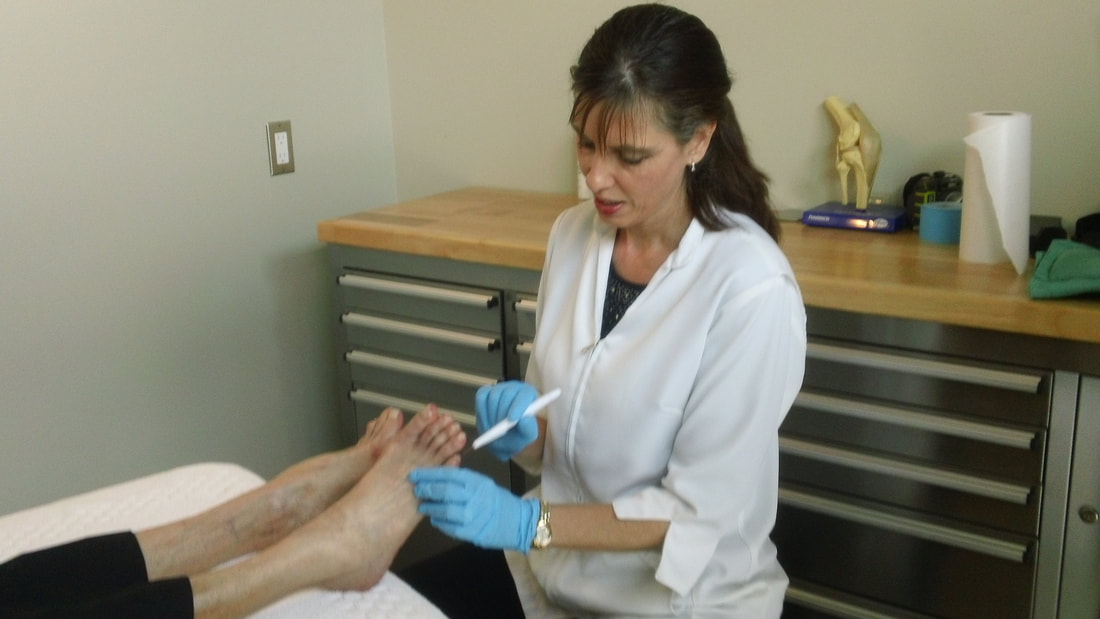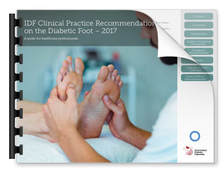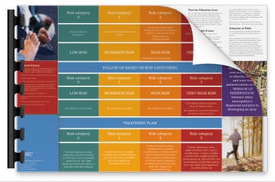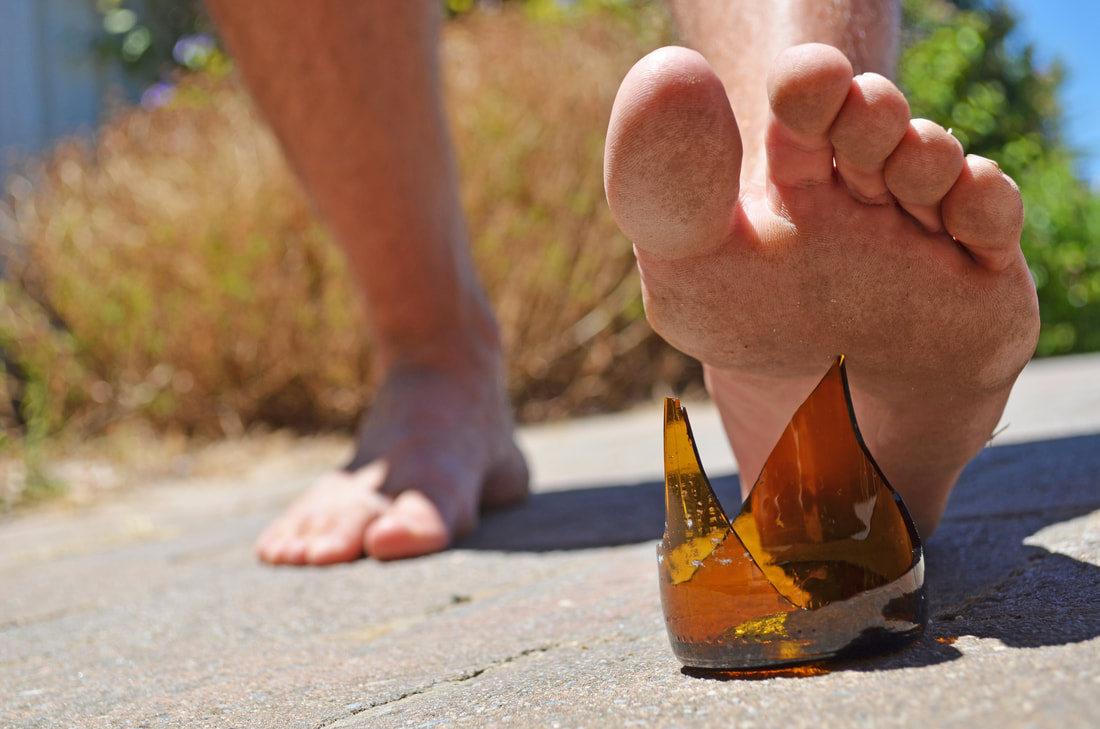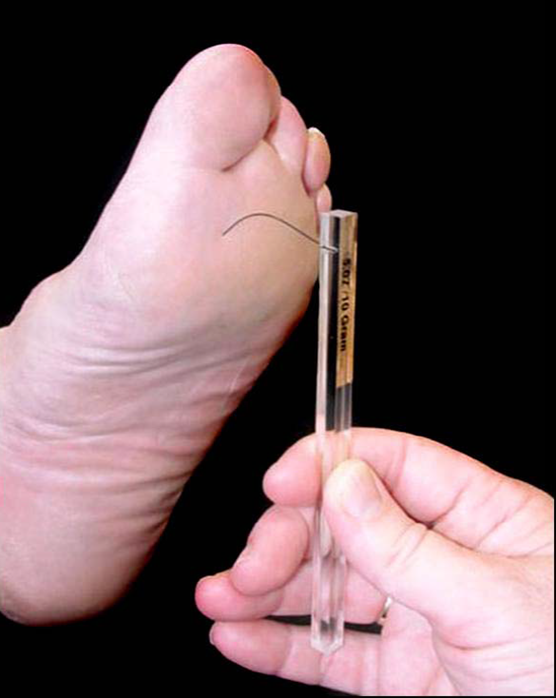Comprehensive Diabetic Foot Exams and Foot CareKatia Langton is Secretary of the Diabetic Foot Stream Committee of the International Diabetes Federation and co-author of the new Diabetic Foot Guidelines:
Diabetic Foot Guidelines - IDF Clinical Practice RecommendationsAll Diabetic Patients Need a Foot Exam Every 12 MonthsEveryone with Diabetes should have a foot screening exam at least every 12 months using a 5.07 monofilament exerting 10 grams of pressure to test for light pressure sensation.
Always Know Your Risk Category 0-3: This Is Your Risk of Future Complications:Foot Screening- Pocket Chart 2017The key to destruction of the Diabetic foot is Diabetic Peripheral Neuropathy. The key to protect the Diabetic foot is Diabetic Orthoses, Diabetic Footwear and Foot Care Nursing. We provide annual assessments for all Diabetic patients in the lowest risk category and more frequently as their Risk Category increases and the risk of ulcers and amputations escalates.
Numbing in your feet?
Sore legs? Callusing? Sensation of bugs crawling on your feet? Diabetic Peripheral Neuropathy?The most troublesome complication of Diabetes strikes the feet first. Elevated blood sugars damages small blood vessels in the feet which in turn damages sensory nerve endings in the feet. As these nerves are dying, the body receives warning signals such as; numbing and tingling in the feet, sharp shooting pain down the legs, the sensation of bugs crawling on the legs and these are all worse at night and worse at rest as the neuropathy progresses.
As we lose protective sensation in the feet, we lose the feedback mechanism that tells us that we are damaging the tissues in our feet. This message would make us rest, get off our feet, change our footwear. Instead we can walk until wounds develop in our feet. Sensory neuropathy destroys the ability to protect the foot from injury. At this point the foot needs protection preventatively as it is not just stepping on a glass or tack that puts the foot at risk; it is the constant, repetitive stress of walking that can allow wounds or fractures (Charcot foot) to develop in the insensate foot. All Diabetic patients will be given a Risk Category for complications and should have this updated annually.
All Diabetic Patients Need To Get Their Feet Checked on an Annual BasisAll Diabetic patients need to get their feet checked on an annual basis by a qualified practitioner to prevent ulcerations and amputations and to keep people on the ground and walking to manage their blood sugars. Foot care nursing is important but it is not a stand alone therapy.
Risk Categorization after a comprehensive assessment is imperative including sensory, motor, range of motion, temperature, assessing deformities, footwear and footcare including skin and nails. This needs to be done as part of an annual assessment. Please contact us to book your annual appointment to receive the foot care you need. At the end of your comprehensive foot exam with our Certified Pedorthist, you will receive recommendations for Custom Foot Orthotics, Footwear to help prevent Painful Foot Conditions, Nursing and follow-up visits based on your Risk Category for Neuropathy.
We manufacture custom Orthotic devices to distribute force, off-load peak pressures and reduce friction. These devices sometimes need to be coupled with Diabetic Orthopaedic footwear which have extra depth, width, seamless and customizable with Rigid Rockers. If you are recommended a Rigid Rocker; these are designed to enhance the function of the orthotic and also to protect the foot. Think of orthotics and footwear as a pair of glasses; the orthotic is the lens and the footwear is the frame. The function of the Rigid Rocker is to off-load peak pressures or painful foot deformities and literally rock right over those areas. If you are recommended Total Contact Custom Orthotics; these are designed to function like a snowshoe to spread out surface area and decrease peak pressures resulting in calluses and leading to ulcers. The orthotics vary but they are typically tri-laminar, foam-based and their function is to protect the Neuropathic Foot.
If you are recommended Foot Care Nursing; foot care nurses remove corns, calluses, and manage toenails to prevent little problems from becoming big problems. How Can We Help
At the end of your foot and leg exam with the Certified Pedorthist you may receive recommendations for Orthotics, Footwear and Nursing follow-up visits based on your the examination and your risk category for neuropathy.
"One million foot long of amputations globally in Diabetic feet and up to 85% of these are preventable." Book An AppointmentWe can help with recommendations for Orthotics, shoes, foot care nursing and more.
Book an appointment with us for your Comprehensive Diabetic Foot Assessment with Risk Categorization today! Learn More:
|

